For sustainable and efficient plant growth, organic nitrogen fertilizers are necessary. These make sure that there is a constant supply of nitrogen, which is essential for plant health and growth. The main aim of this article is to discuss the ideal options for organic nitrogen fertilizers, including their formulation, advantages, and application techniques. Knowing the variety of organic sources of nitrogen assists gardeners as well as farming specialists to make informed choices with regards to soil fertility that promotes healthy plant growth. In-depth analysis will go through different types of organic nitrogen fertilizers ranging from blood meal and fish emulsion derived from animals to sources like alfalfa meal and compost made out of plants. This thorough scrutiny will shed light on choosing the right type of organic nitrogen fertilizer for a specific horticultural need, along with guidelines on how they should be used efficiently since it has become a major concern among many growers in recent years.
What is Organic Nitrogen Fertilizer?
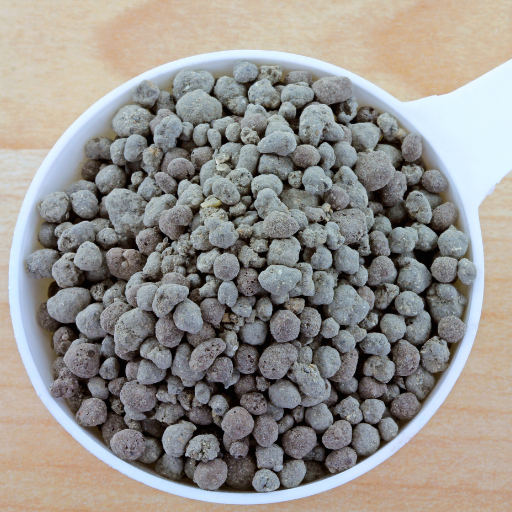
Organic nitrogen fertilizers refer to a type of plant food obtained from naturally occurring sources that supply organic nitrogen. They are different from the synthetic ones because they are made chemically and have an instant availability of nitrogen. Organic kinds do not release all the nitrogen contained immediately as they decompose, thereby ameliorating soil structure and stimulating activities of helpful microorganisms. Some common examples include blood meal and fish emulsion derived from animal by-products, alfalfa meal and soybean meal made from plants, as well as composted organic matter. The assurance is that they last for long, providing a constant flow of Nitrogen, therefore reducing chances of nutrient leaching and enhancing sustainable fertility plus health of soil.
Understanding Nitrogen Fertilizer
Nitrogen is one of the most important nutrients for plants since it is involved in synthesizing proteins, enzymes, and chlorophyll among other processes. Organic forms release their elements in such a way that once they break down; plants can utilize them in this state. Key factors to consider when evaluating organic nitrogen fertilizers include the amount of nitrogen used, carbon to nitrogen ratio (C:N), rate at which nutrients are released.
- Nitrogen Content:
- Blood Meal: Approximately 12-15% nitrogen
- Fish Emulsion: Typically 5% nitrogen
- Alfalfa Meal: Around 2-3% nitrogen
- Composted Manure: Varies, but typically around 1-2% nitrogen
- Carbon-to-Nitrogen Ratio (C:N):
- Blood Meal: Low C:N ratio (~3:1), meaning rapid release of Nitrogen.
- Fish Emulsion: Moderate C:N ratio (~5:1), suited for quicker nutrient availability.
- Alfalfa Meal: Slightly higher C:N ratio (10:1 to 12:1), offering slower N release.
- Compost: Variable C:N ratio (15:1 to 25:1), indicating gradual release of Nitrogen.
- Rate of Nutrient Release:
- Blood Meal: Fast release, ideal for quick correction of nitrogen deficiencies.
- Fish Emulsion: Moderately fast release, providing a balanced nutrient supply.
- Alfalfa Meal: Slow to moderate release, necessary for continuous growth in leaves and stems.
- Compost: Slow release, enhancing soil structure fertility over long term time.
This is why organic nitrogen fertilizers decompose gradually, releasing nutrients when plants need them most, thus reducing the risk of nitrogen leaching and promoting healthier soil microflora. Therefore, gardeners and agricultural professionals can make informed fertilizer application decisions based on these technical components to enhance plant health and sustainable soil management practices.
Why Choose Organic Nitrogen Fertilizer Over Synthetic Options?
Organic nitrogen fertilizers have several advantages over synthetic ones due to both environmental and agronomic benefits that they provide. Firstly, organic fertilizers improve soil health by enhancing its structure, water retention capacity, and microbial activity. On the other hand, synthetic fertilizers are known to cause land degradation through erosion as well as leaching out of soils, while using the organic type aids reduces the chances of nutrients running off, thereby curtailing groundwater pollution hazards.
Biologically speaking, blood meal, fish emulsion alfalfa meal compost this form releases Nitrogen forms that are taken up by plants, hence avoiding overdosing them. The carbon-to-nitrogen ratio (C:N) ranges from low (~3:1 in blood meal) to moderately high (up to 25:1 in compost), resulting in a controlled release rate of N, which is in line with crop needs. In addition, utilization of organic substances boosts the cation exchange capacity (CEC) of soils thereby improving nutrient retention and availability towards plants.
Sustainability is another significant advantage associated with this choice. Organic fertilizer sources tend to be natural materials derived from agricultural byproducts; this contributes to circular economy initiatives and helps reduce the use of fossil fuels in the production of chemical fertilizers. Thus, it conserves ecological balance and promotes long-term soil fertility and resilience.
In summary, organic nitrogen fertilizers deliver important environmental and technical advantages justifying their suitability for sustainable agriculture and horticulture.
Advantages of Slow-Release Fertilizer for Plant Growth
With a continuous supply of nutrients to plants, slow-release fertilizers can ensure that there is consistent plant nutrition across time. When compared to those that quickly release nutrients, these types of fertilizers help minimize the risk of nutrient leaching and runoff while increasing the efficiency of nutrient use. Due to its timing which mimics natural growth rates, this kind promotes better root development and a stronger structure for plants. Additionally, gardeners and farmers spend less time because they don’t have to apply it frequently. As a result, it improves plant growth, increases harvests and enhances environmental conditions.
How Does Organic Nitrogen Fertilizer Work in Your Lawn?
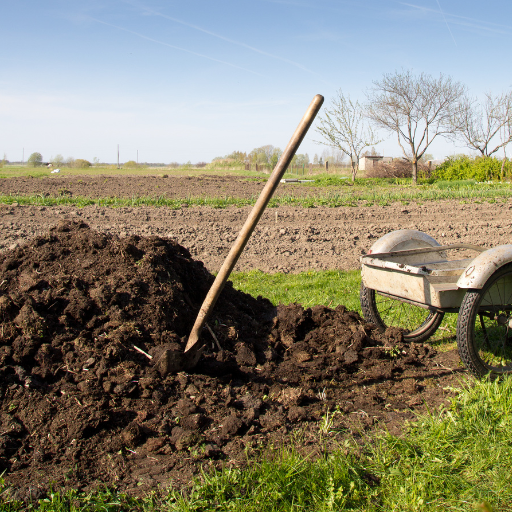
The function of organic nitrogen fertilizer is to slowly decompose and supply nutrients over a period of time, ensuring continued supply of nitrogen in your lawn. Microorganisms in the soil break down the organic material, making it usable at grassroots. This slow release is advantageous since it leads to uniform growth rate of grasses and reduces nitrate loss through leaching which is common with synthetic fertilizers. Also, organic nitrogen fertilizers enhance soil structure as well increase microbial activity thus resulting in healthier more durable lawns. These fertilizers also boost water holding capacity and nutrient absorption capabilities of soils leading to long-term lawn health.
Nitrogen’s Role In Plant Growth
Nitrogen being a major macronutrient for plant growth aids in production of amino acids, proteins and nucleic acids that are essential biomolecules. It plays an essential role in chlorophyll synthesis which is important for photosynthetic mechanism when plants convert light energy into chemical potential energy. Sufficient nitrogen supply stimulates vegetative growth vigor besides changing the overall greenness on leaf surfaces.
From a technical point of view, plants take up nitrogen largely as either nitrate (NO₃⁻) or ammonium (NH₄⁺) ions. For most crops, such as corn, the ideal soil range for this macronutrient is 20-30 ppm (parts per million) because levels below this range can result in symptoms like stunted growth or yellowing leaves while high levels cause excessive vegetative growth with poor quality harvests. According to various studies carried out on different crops at distinct stages of development; between fifty and one hundred fifty kilograms per hectare usually suffice for best performance. Effective management requires monitoring soil nitrogen content so as to adjust fertilizer use accordingly thereby avoiding adverse environmental outcomes associated with groundwater contamination and NOₓ.
How Slow-Release Fertilizer Helps Your Lawn
Slow-release fertilizers are very useful for home owners who are looking to maintain a steady flow of nutrients over an extended period, minimizing the risk of nutrient losses and protecting environmental integrity. Conversely, the rapid dissolution and release of nutrients by quick-release fertilizers mean that plants are unable to use all the nutrients supplied in a single burst. This is done by releasing nutrients in tiny quantities unlike those that dissolve quickly and supply a burst of nutrients thus allowing plants to take them better up. The effects are sustainable growth, protection against fertilizer burn, and improved root development.
At present slow release fertilizers have nitrogen release periods ranging from 8 to 12 weeks while some formulations can extend for 16 weeks or more. These sustained releases may be achieved through different means such as entrapment inside polymer coatings, incorporation into organic matrices as well as chemical transformations. A combination of information gathered from major sources shows that maintaining lawn health requires supplying about 25-50% nitrogen levels on a slow-release basis.
Also, slow-release fertilizers reduce the frequency of application required; hence, they are cost-friendly and less involved labor-wise. Therefore, it is important to adhere to the manufacturer’s recommendations on the rate at which they should be applied, especially during times when it’s growing, typically between one and two pounds per every thousand square feet area in terms of nitrogen only. The application of slow-release fertilizers aligns better with practices for sustainable lawn management because they match nutrient availability with grass growth needs without risking runoff or groundwater contamination.
Measurement and Management of Nitrogen Levels in Soil
Soil testing is necessary for accurate measurement of nitrogen levels in soil. This will involve taking samples of soils from several points within the area and ensuring that they represent a true picture. These samples are then taken to the laboratory for analysis, where the total nitrogen content is determined using methods like Kjeldahl or Dumas combustion techniques. The results can show the amount of nitrogen available in the soil, guiding fertilizer application rates.
Maintaining optimal nitrogen levels calls for a balanced approach incorporating appropriate fertilization practices with sustainable agriculture. Regular applications of organic matter such as compost or well-rotted manure can improve soil structure and microbial activity while increasing soil nitrogen contents. Alternatively, leguminous cover crops could also be used to increase biological fixation thereby natural enhancing nitrogen levels in the system . Equally important is monitoring the pH levels in soils since it affects availability of nitrogen;; it is generally best for most plants when maintained at 6.0-7.0 pH range.
Finally, strict adherence to precise application rates and timing based on plant needs and soil test results prevents leaching/runoff and guarantees efficient use of nutrients besides safeguarding the environment. Hence, there should be implementation these things so as to enhance better plant growth and healthy soils over time.
What Are Some Natural Sources of Organic Nitrogen?
Organic nitrogen sources mainly include manure, compost and plant remains. The richness of nitrogen and other nutrients in animal manure can be very beneficial to soil fertility as well as microbial activities. Composts are made up of organic matter that has decomposed, such as vegetable peels, grass cuttings, and leaf fall; hence, they release nitrogen slowly through decomposition in the soils. Furthermore, residues from plants in the form of cover crops, especially legumes, also increase the amount of nitrogen in the soils through biological fixation, where these crops convert atmospheric nitrogen into usable forms by other plants. These natural amendments enrich both the nutritive value and structure of soils.
Using Coffee Grounds as a Nitrogen Source
Coffee grounds can be an effective source of nitrogen when mixed with soil. The coffee ground contains 2% volume nitrogen, which is good for the growth of plants and soil care. It helps put on more Nitrogen into compost when it is added there while maintaining a carbon to Nitrogen ratio. In addition, they help develop water-retaining properties in the soil, thereby improving its structure besides encouraging useful microorganisms’ activity. However, excess use should be avoided, by mixing them thoroughly with other organic substances so as to prevent any possible problems like acidity or fungi attacks.
Benefits of Manure and Compost in Nitrogen Fertilizer Recipes
Manures and compost have numerous advantages when applied to N fertilizers recipes. Manure contains large amounts of nutrients such as N but at times secondary elements and micronutrients required for plant growth are supplied too (Singh & Agrawal). This improves microorganism abundance within it and enhances its water-holding capacity, besides fostering soil structure development, among others. On the contrary, as organic matter deteriorates, compost continually releases a slow-acting kind of Nitrogen while humus enriches our soils, thus contributing towards aeration enhancement within it plus ensuring pH stability (Ishikawa et al., 2020). Mixing manure and compost in the nitrogen fertilizer formulas thus leads to a comprehensive nutrient package and hence soil fertility for better crop growth and higher yields.
Exploring High Nitrogen Organic Fertilizer Options: Blood Meal and Feather Meal
Blood meal and feather meal are two of the strongest high-nitrogen organic fertilizers. Blood meal contains, on average, about 12-15% by weight nitrogen derived from dried powdered blood of slaughtered animals. This makes it an excellent source of rapid nitrogen release for improved plant growth within short periods . It also adds trace elements such as iron which are important in increasing soil fertility as well as encouraging health plants’ growth. On the other hand, feather meal has a nitrogen content of approximately 12-13% that is made from poultry feathers through processing. Unlike the former, this has slow nitrogen release rate thus making it a continuous supply of nutrients to plants. Moreover, it improves soil texture and enhances microbial proliferation over time. Blood and feather meals are applied in organic gardening because they ensure strong healthy plant growth by supplying plenty of nitrogen.
How to Create Homemade Nitrogen Fertilizer?
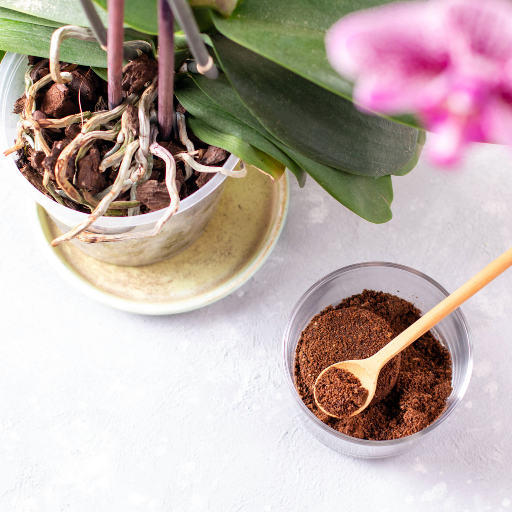
A homemade nitrogen fertilizer can be made using common organic materials rich in nitrogen. One of the effective techniques is to mix green lawn clippings with kitchen waste like fruit and vegetable peels, which decompose to release this element. The other method is through sprinkling coffee grounds straight into the soil or adding them to your compost pile. Alternatively, urine is a source of high urea— which is powerful nitrogen compound you can use instead. It should be diluted with water at a rate of 1:10 before application so as not to affect the plants negatively. By employing these substances into your garden, you will be able to come up with a home-produced fertilizer loaded with nutrients for promoting healthy plant growth.
Ingredients Needed to Make Home-Made Nitrogen-Rich Fertilizers.
Grass clippings, coffee grounds, and animal manure are some essential ingredients needed in making effective homemade nitrogen-rich fertilizers. Each provides varying amounts of nitrogen and other nutrients vital for plants’ well-being.
- For instance, fresh grass clippings, usually with a 2-4% nitrogen content by weight, are a good source of mulch or can be decomposed in compost piles to offer an immediate and sustained source of nitrogen.
- Equally important are coffee grounds, which contain 1.5%- 2.1% nitrogen. As slightly acidic substances, they add organic matter to the soil, thereby enhancing its structure and improving microbial action.
- Animal manure from chickens or cows has been widely used as dependable sources of nitrogen. For example, chicken manure has a nitrogen content of about 1.5%, phosphorus 1.3%, and potassium at 0.7%. On the other hand, cow’s dung has low amounts of nitrogen but it is rich in all major plant nutrients thus; it is enhancing water holding capacity and air movement through soils.
These materials can be used alone or combined together to create an all inclusive home-made fertilizer that contains enough Nitrogen for strong growth and sustainability of healthy plants.
Step-by-Step Guide to Making Fertilizer at Home
Step 1: Collect Materials
Gather the necessary materials for your homemade fertilizer. This includes grass clippings, used coffee grounds, and animal manure from chickens or cows. To maintain the integrity of your fertilizer, ensure all materials are free from pesticides or non-organic compounds.
Step 2: Prepare the Grass Clippings
If using fresh grass clippings, spread them out to dry slightly before incorporating them into your compost or applying them directly as mulch. This prevents excessive heat build-up and rapid decomposition that might harm plants.
Step 3: Add Coffee Grounds
Incorporate used coffee grounds by sprinkling them around your plants or mixing them into your compost pile. Use them sparingly to avoid over-acidifying the soil, which could adversely affect plant health.
Step 4: Process Animal Manure
If using animal manure, it’s crucial to compost it first. Fresh manure can be too strong and may burn plants. Composting helps to break down harmful pathogens and stabilizes the nutrients, making them more accessible to plants.
Step 5: Combine Ingredients
Mix your dried grass clippings, composted coffee grounds, and processed animal manure thoroughly. Aim for a balanced ratio to ensure the final product provides a consistent nitrogen supply and other nutrients.
Step 6: Application
Apply the homemade fertilizer to your garden soil evenly. Lightly work it into the top few inches of soil or use it as a top dressing around plants. Regular application ensures a steady nutrient supply, promoting vigorous growth and robust plant health.
Following these steps, you can create a high-quality, nitrogen-rich fertilizer at home, enhancing your gardening efforts with minimal environmental impact.
Guidelines and Precautions for Home-Made Nitrogen Fertilizers
Proper Storage of Fertilizers: Homemade fertilizers should be stored in cool, dry area so as to avoid spoilage. Well-preserved storage retains the nutrients’ effectiveness and lowers the chances of pollution.
Soil pH Monitoring: Regular check on soil acidity is necessary to ensure that it remains balanced. Excessive use of nitrogen based fertilizers can cause soil acidification that may harm plant growth.
Avoid Over-Fertilizing: A High nitrogen content can result in nutrient imbalances, which are not good for crop yield and can cause environmental safety hazards due to runoff. Always follow recommended dosages and frequencies.
Wearing protective clothes: Put on gloves and a mask when handling animal manure or other compost constituents that could contain harmful pathogens or dust particles you might breathe in.
Hand Washes And Produce Washing: Rinse your hands well after working with any kind of fertilizer. Also, remember to wash all harvested fruits so as not to leave any traces of fertilizer on them.
Timing the applications: Apply the fertilizers during growing periods while avoiding late season applications that may result in excess foliage growth at the expense of fruiting or flowering.
What Are the Best Practices for Using Organic Nitrogen Fertilizer?
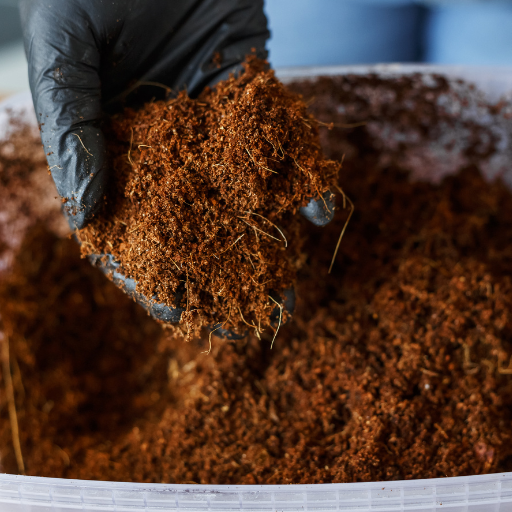
The correct use of organic nitrogen fertilizers requires adherence to certain principles that will ensure maximum benefits and minimize any harmful effects. To achieve a steady supply of nutrients, go for slow-release organic nitrogen sources such as composted manure, bone meals or blood meal. Incorporate the fertilizer into the soil before planting and add more amounts if necessary during the growing season. Test for pH levels and nutrient content to attain proper soil preparation by adjusting accordingly to maintain a balanced environment. Enough watering of the soil must be done after applying so as to facilitate penetration of nutrients through the root zone. Avoid pouring fertilizers on plant stems or leaves; instead, apply them away from them to avoid burning. Last but not least in conclusion it is important that we practice crop rotation and companion planting which can help improve nitrogen availability while at the same time continually improving our soils over time.
Timing and Frequency of Application
Correct timing as well as frequency for applying organic nitrogen fertilizers are very fundamental for an optimal plant growth plus good soil health. It’s advisable that you employ organic nitrogen fertilizers right at the beginning of your growing season in order to enhance nutrient availability. For crops with long periods of development, one mid-season application can sustain growth and productivity throughout this period. Overfertilization should be avoided because it may harm plants by leaching into groundwater. Generally, once or twice a year is enough, depending on results from soil tests as well as the specific needs of various crops. You should always irrigate after application which allows easy integration into the ground thus reaching roots effectively.
Applying Slow-Release Nitrogen Fertilizer for Best Results
Before applying slow-release fertilizer production, initially have your land analyzed through soil sampling tests in order to know what kind of fertilizer you need based on nutrient content required by plants grown thereon; level 10% Nitrogen is often expressed as 10-0-0 on product labels.
Soil should be prepared first by tilling to about 6-8 inches depth to facilitate even distribution of fertilizer and ensure it penetrates to the root zone. Correct dosage should be observed as per the company’s instructions, which range from an average of 1-2 pounds for vegetables and flowers covering a hundred square feet to the latter specified by soil test results.
Evenly distribute this manure on top of your soil, keeping off direct contact between the stem or leaves of plants and the fertilizer since it may cause burn. Finally, rake lightly so as to mix it into soil ensuring thorough mixing without washing away through runoff.
Water should be consistently applied to that particular area, enhancing slow-release mechanism activation and resulting in the gradual absorption of nutrients by roots. If your plants show signs of nutrient deficiency or excess, you can adjust accordingly during subsequent applications as required. Soil testing should also be done regularly to align fertilization strategies with changing crop needs and soil conditions.
Common Mistakes When Using Organic Fertilizers
One very common mistake people make is applying too much organic fertilizer; although they release their nutrients more slowly than synthetic ones, excessive amounts could still lead to nutrient imbalances and harm plant growth. Another mistake is using organic fertilizers at wrong times which would mean ineffective uptake of these nutrients by plants. It is important that we properly compost and age organic materials rather than using raw or partially decomposed materials because they can introduce pathogens or weed seeds into our garden beds. Proper management and timing are crucial to maximize the benefits and minimize potential issues associated with organic fertilization.
What to Consider When Choosing Organic Nitrogen Fertilizer?
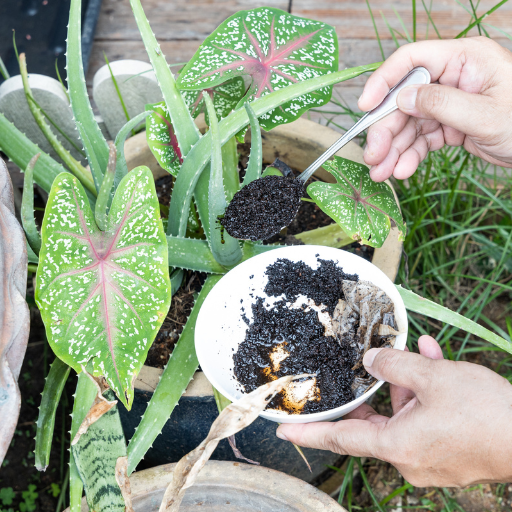
When choosing an organic nitrogen fertilizer, the source of the nitrogen should be considered. The usual suspects are compost, manure, blood meal, feather meal and fish emulsion. Each different source will have different release rates for nitrogen; while blood meal is for a quick fix up of nitrogen levels and feather meal acts as a sustained supplement for the same nutrient. Evaluate the ratio of N-P-K (nitrogen-phosphorus-potassium) to ensure it meets your plants’ nutritional requirements. In addition, consider whether there are any other micronutrients present and how they might affect soil pH. Lastly, evaluate its sustainability as well as its environmental impact such that you choose fertilizers in support of eco-friendly practices and soil health.
Testing Soil’s Nutrient Needs
For accurate assessment of soil nutrient needs, conduct soil tests to ascertain existing amounts of essential elements including nitrate-nitrogen (NO3-N), potassium (K), phosphorus (P) and trace elements such as iron (Fe). First off, one can be obtained from garden centers since they sell many soil testing kits, while more detailed ones could be obtained from laboratory testing kits. Consider the pH level of your soil which affects nutrient availability. The optimum pH range for most plants is between 6 and 7.Based on test results, you can determine which nutrients are missing or deficient and then use this information to make informed choices about what kind and how much organic fertilizer is needed to bring about balanced soil fertility for healthy crop growth.
Balancing NPK Ratios
Balancing NPK ratios refers to maintaining the right amount of nitrogen (N), phosphorous (P) and potassium (K) in order to satisfy plants’ specific nutrient requirements.Nitrogen promotes leafy growth while phosphorus supports root development and flower production – all important attributes –while potassium enhances plant health thereby increasing their resistance against diseases.To achieve a balanced NPK ratio, start by understanding the specific requirements of your plants. Different plants have different nutrient requirements; for example, leafy vegetables may need more nitrogen while flowering crops may require higher phosphorus.
Then you can add fertilizers that supply the required balance of NPK. For instance, a general-purpose fertilizer may be 10-10-10 meaning equal amounts of each element. However, for targeted nutrition, fertilizers with specific ratios like 5-10-10 (lower nitrogen, higher phosphorus and potassium) can be used for flowering plants to promote bloom and root growth.
Consider also the pace of nutrient release and the level of soil uptake capacity. A soil test is helpful in determining any deficiencies so that one can adjust NPK ratios to suit such conditions. Besides, slow-release fertilizers are ideal to maintain availability over time without leaching and ensure uniform crop growth.
Choices For Slow Release
In order to properly choose organic slow-release options, one has to look at the nutrient content and the release rate that suits plant requirements and soil conditions. Under microbial action, these fertilizers gradually decay over time, giving nutrients away, thereby reducing the risk of nutrient leaching in the plant for a long period of time.
One highly recommended choice is composted manure, which provides a well-balanced nutrient profile and enhances soil structure. Composted manure technical parameters usually indicate a slow release period of 3-4 months, which supplies plants with essential macronutrients like nitrogen, phosphorous, and potassium in moderation.
Bone meal is another common source of organic slow-release fertilizer. It contains around 4% nitrogen and is high in phosphorus (about 15% P), so it is most suitable for root and flower development. Bone meal’s decomposition differs from that of bone meal, but it generally releases nutrients over a period ranging from 2 to 6 months, thus ensuring continued plant growth.
Alfalfa meal also stands out because of its well-balanced nutritional composition (approximately 2.7% N, 0.5% P, 2.1% K). Alfalfa meal releases nutrients slowly over about two to six months, hence providing continuous feeding for plants all through their growing cycle.
These organic slow-release choices enhance soil fertility while maintaining a constant supply of nutrients to vegetables, promoting strong, healthy growth. These fertilizers can be considered depending on your crops’ specific nutritional requirements and soil characteristics so that you can optimize your results.
Frequently Asked Questions (FAQs)
Q: What is organic nitrogen fertilizer and why is it important?
A: Organic nitrogen fertilizer is a type of fertilizer derived from natural sources that provide essential nitrogen for plant growth. It helps to maintain a nature safe approach to farming and gardening by avoiding synthetic chemicals, ensuring the soil remains healthy and fertile.
Q: What are some examples of organic nitrogen fertilizers?
A: Examples include urea, fish emulsion, composted manure, feather meal, blood meal, and bat guano. These provide a steady supply of natural nitrogen, enhancing soil health and plant growth.
Q: How does fish emulsion act as a liquid fertilizer?
A: Fish emulsion is a liquid fertilizer made from fish that decomposes to release nutrients. It’s particularly useful for providing a nitrogen boost to plants, making it a good source of nitrogen that helps in vegetative growth.
Q: What role does urea play in plant growth?
A: Urea is an organic nitrogen fertilizer that plays a crucial role in plant growth by providing a rich source of nitrogen. It helps in the formation of amino acids, proteins, and other essential compounds necessary for healthy plant development.
Q: Are there liquid organic nitrogen options available?
A: Yes, fish emulsion and foliar sprays derived from other organic materials are popular liquid options. These liquid fertilizers are easy to apply and can deliver nutrients directly to the plants through their leaves.
Q: What is the best organic nitrogen fertilizer for leafy vegetables like lettuce and spinach?
A: Leafy vegetables thrive on nitrogen-rich fertilizers. Fish emulsion, blood meal, and compost are all excellent choices as they provide the essential nutrients these plants need for lush growth.
Q: How do soil amendments affect nitrogen levels in the soil?
A: Soil amendments like compost, manure, and milo add organic matter to the soil, helping to fix nitrogen in the soil and improve its overall fertility. These materials decompose slowly, providing a continuous supply of nutrients.
Q: What should I consider when choosing a high nitrogen fertilizer for my garden?
A: When selecting a high nitrogen fertilizer, consider the specific needs of your plants, the form of the fertilizer (liquid or solid), and its nitrogen content. For example, blood meal has an NPK ratio of 13-0-0, making it an excellent choice for nitrogen supplementation.
Q: How can bat guano be used as a fertilizer?
A: Bat guano is a rich source of nitrogen and phosphorous. It can be applied directly to the soil or used to make a compost tea for watering the plants. It’s an effective fertilizer for both nitrogen boost and overall soil health.
Q: Can I use organic nitrogen fertilizers in pots and container gardening?
A: Yes, organic fertilizers like fish emulsion and composted materials can be used in pots and container gardens. They provide the necessary nutrients for plants grown in restricted soil environments, ensuring they get the nutrients they need.






